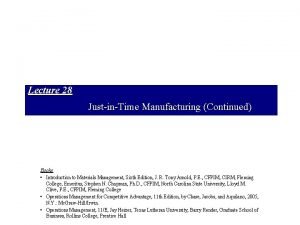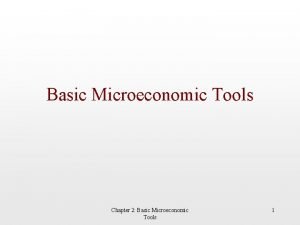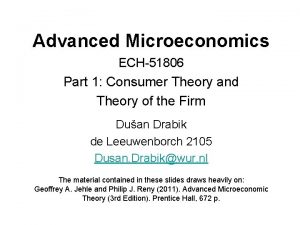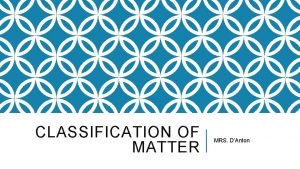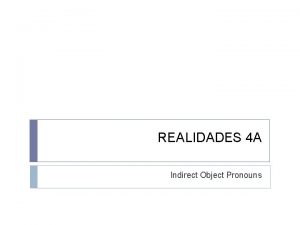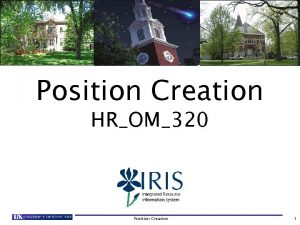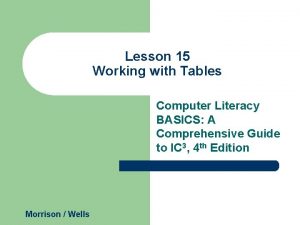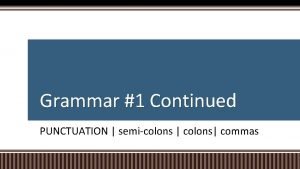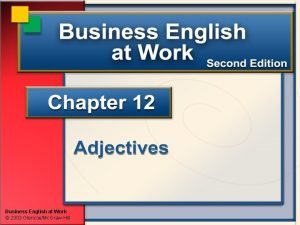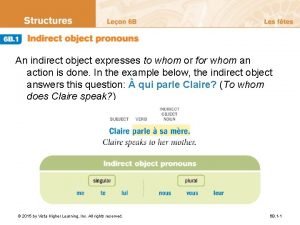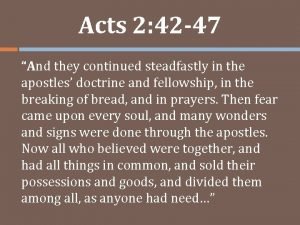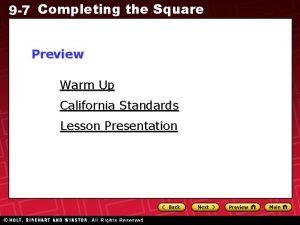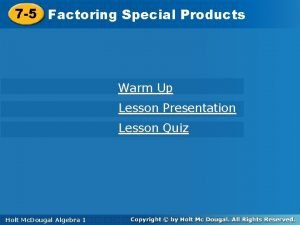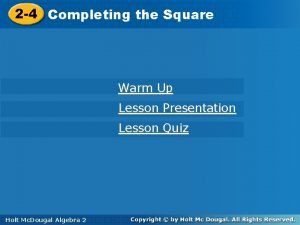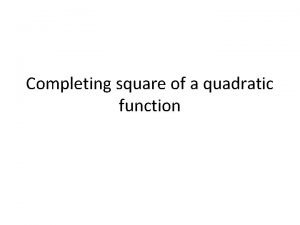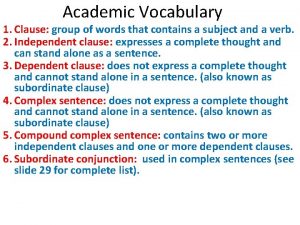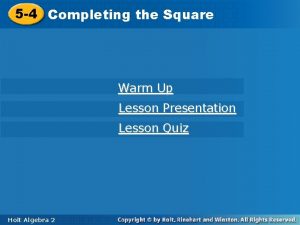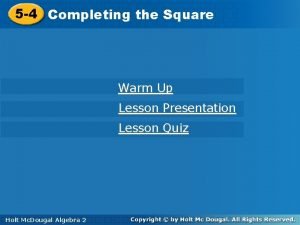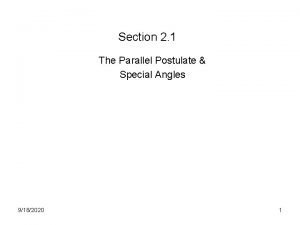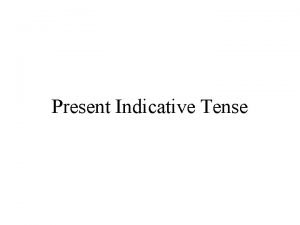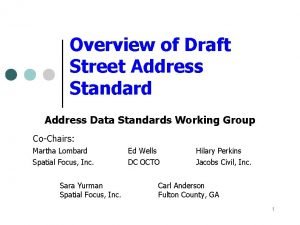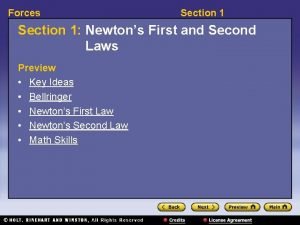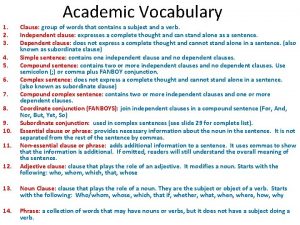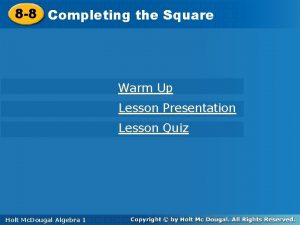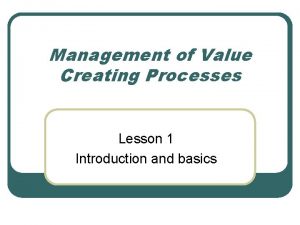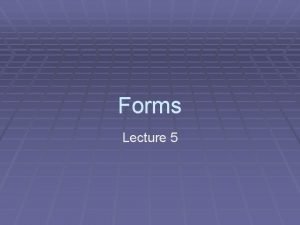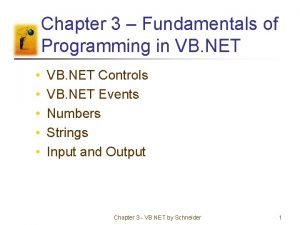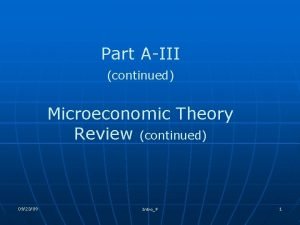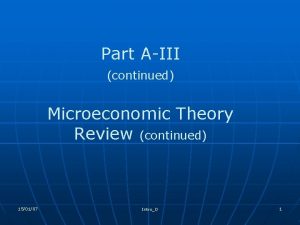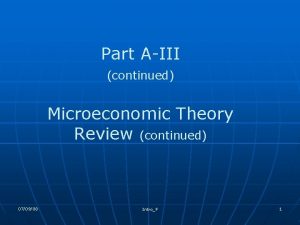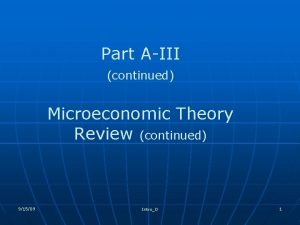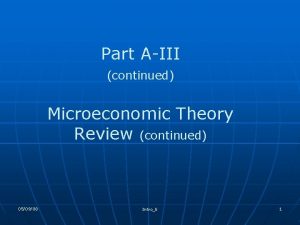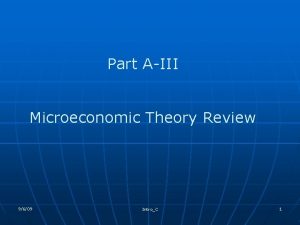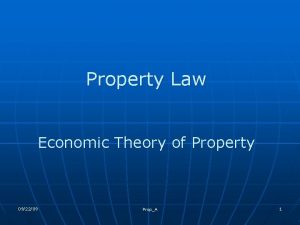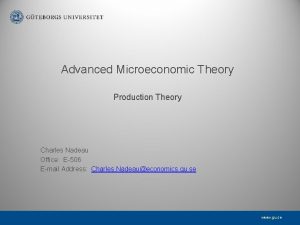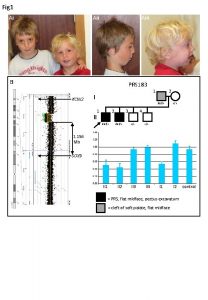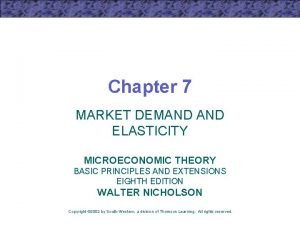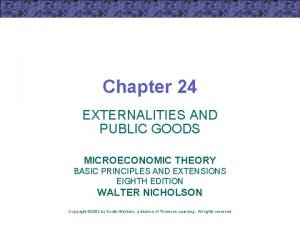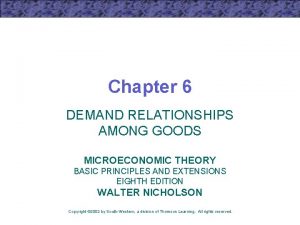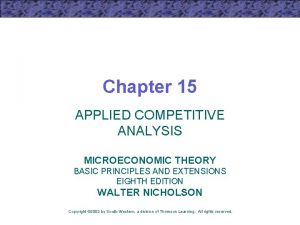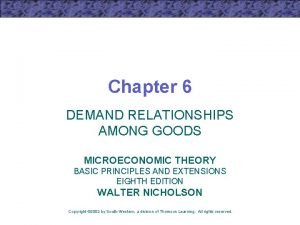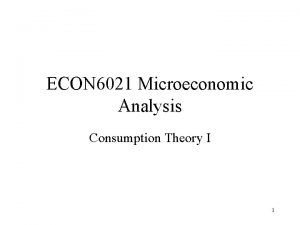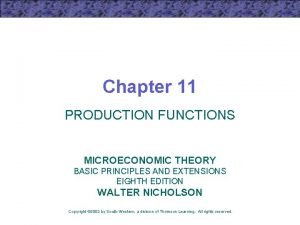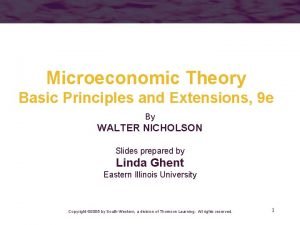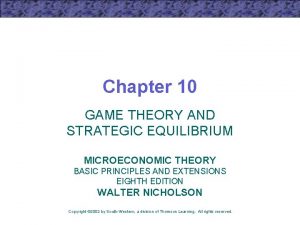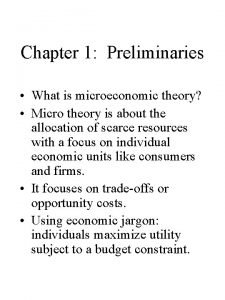Part AIII continued Microeconomic Theory Review continued 092209





















































- Slides: 53

Part A-III (continued) Microeconomic Theory Review (continued) 09/22/09 Intro_E 1

Economics One-on-One n The limitations of the Market Model n Game Theory n A model of Bargaining 09/22/09 Intro_E 2

To begin with Remember trading is ‘good’ Voluntary exchange of anything between any two agents improves the wellbeing of both agents (people, firms – parties) Voluntary exchange generally represents a Pareto Improvement Generally? Why generally? Remember the concept of market failures: -Monopoly (monopsony) -Public goods 09/22/09 -Externalities -Severe informational asymmetries Intro_E 3

Market failures aside, One primary goal of any economic system is to structure itself so as to facilitate voluntary exchange among the economic agents. By ‘facilitate’ we mean Make it ‘easy and cheap’ - minimize transaction costs More on this later 09/22/09 Intro_E 4

Recall, a market is any coming together of buyers and sellers Markets help facilitate voluntary exchange (trading) and trading generally increases wellbeing – they lower the cost of trading In first and second year you learn about the ‘market model’. This is one particular model of how trading occurs. The ‘market model’ describes the process of trading - coordinating the utility and profit maximizing behaviour of many independent of individual agents 09/22/09 Intro_E 5

The ‘market model’ is intended to explain how trading takes place when there are many relatively small individual agents coming together to trade in a relatively large and very impersonal environment. - a farmer selling wheat you buying apples No individual buyer or seller can affect the outcome – each agent acts independently. Welfare improving trades occur at a price set by ‘the market’ 09/22/09 Intro_E 6

The market model Market for Apples Price of apples Supply of apples (all potential apple producers) Pe Demand for apples (all potential apple consumers) Qe 09/22/09 Intro_E Quantity of apples 7

Limitations of the market model n Many buyers and/or sellers n All buyers are buying and all sellers are selling the same (or similar) item n Perfect (very good) information n Price is known n 09/22/09 Price is ‘given’ (accepted) by buyers and sellers (or at least one of the buying side or selling side) Intro_E 8

But what if ? n There is only one buyer and one seller (or just a few decisions makers) n The item being sold is more or less unique n There is no established market price set prior to trading Can voluntary exchange (trading) still take place? - YES Will it be welfare improving? – GENERALLY What can the market model say about the process of trading? – NOT MUCH What can economic theory say about the process of trading and the outcome? - LOTS 09/22/09 Intro_E 9

Economics One-on-One - few decision makers (agents) - the optimal decision of each agent depends on the decision of the other agents - interdependence In such a situation, each agent must formulate a ‘strategy’ which accounts for the possible decisions of the other agents. This is a ‘game’ - poker, football, bridge, dating, politics, war, whatever. 09/22/09 Intro_E 10

Courts and lawyers (The Law) frequently deal with situations in which there a few decision makers making decisions that are interdependent. Game theory is a formal method of analysis which allows us to understand (and predict) the behaviour of rational economic agents when there a few agents making interdependent decisions. 09/22/09 Intro_E 11

Basic Game Theory The Basics of a game: - the players (economic agents) - the strategies of each player - the payoffs to each player under each strategy - determining each player’s optimal strategy and the game outcome 09/22/09 Intro_E 12

Example: Mary and John each want to sell something Situation: - two potential sellers of the same good (home owners, car owners, merchants contemplating a sale, etc. ) - if Mary offers her good for sale and John does not, then Mary will earn $1. - if Mary offers her good for sale and John offers his good for sale, Mary will suffer a $2 loss. 09/22/09 Intro_E 13

- if John offers his good for sale and Mary does not, then John will earn $1. - if John offers his good for sale and Mary offers her good for sale, John will suffer a $2 loss. - if either seller does not sell, then that seller will break even. 09/22/09 Intro_E 14

In the above ‘Game’ Players: Mary and John Strategies: Sell or don’t sell Payoffs to each player under each strategy: (listed in the last two slides) The decisions of Mary and John are clearly interdependent. Each must consider what the other agent is going to do before they make their own decision Can we predict the outcome? What will Mary and John do? 09/22/09 Intro_E 15

Let’s consider what we know in the form of a ‘payoff matrix’: the value to each player for each of the possible outcomes PAYOFF MATRIX Mary’s decision SELL DON’T SELL (-$2, -$2) ( $1, $0) ( $0, $0) John’s decision SELL DON’T SELL $1) (first entry in the round brackets represents John's payoff second entry represents Mary's payoff) 09/22/09 Intro_E 16

What will each player do? Consider Mary’s options and the resulting outcomes – the ‘extensive form’ or a ‘decision tree’ Mary’s payoff If John sells and Mary does not sell If John does not sell and Mary sells and Mary does not sell 09/22/09 Intro_E -$2 $0 $1 $0 17

Assume that Mary and John do not cooperate – neither will tell the other agent what they intend to do Mary has no information on what John will do so she must assume that there is a 50/50 chance of him selling or not selling. In this case: the expected value to Mary if she sells is. 5(-$2) +. 5($1) = -$0. 50 the expected value to Mary if she does not sell is. 5($0) +. 5($0) = $0 09/22/09 Intro_E 18

Prediction: Mary will not sell What about John? How does he view the situation? In this particular non-cooperative game with no information – exactly the same way 09/22/09 Intro_E 19

John’s payoff If Mary sells and John does not sell If Mary does not sell and John sells and John does not sell 09/22/09 Intro_E -$2 $0 $1 $0 20

If John has no information on what Mary will do so he also must assume that there is a 50/50 chance of her selling or not selling. In this case: the expected value to John if he sells is. 5(-$2) +. 5($1) = -$0. 50 the expected value to John if he does not sell is. 5($0) +. 5($0) = $0 09/22/09 Intro_E 21

Prediction: Both Mary and John will decide not to sell Is this a good outcome? It is the best that Mary and John can do in the situation: no information/no co-operation We would say that each player has a dominant strategy ‘ the optimal move for a player to make irrespective of the other player’s decision’ 09/22/09 Intro_E 22

In a sense, this is a pretty amazing result. Neither agent knows anything about the other agent’s expected payoffs (the nature of their utility or profit function) nor the other agent’s likely strategy. Each agent only knows their own utility or profit function. Yet in this particular non-cooperative game with no information we can predict how each agent will behave and the game outcome 09/22/09 Intro_E 23

Dominant strategies and equilibrium Since each player has a dominant strategy we can predict what each player will do (in this game – it is ‘not sell’) This leads to a prediction that the equilibrium for this game is such that neither Mary not John will offer their item for sale In this particular case the equilibrium is a Nash Equilibrium ‘no individual player can do any better by changing their decision so long as the other player does not change their decision’ For a non-repeated game this is it? 09/22/09 Intro_E 24

But is there a better outcome for Mary and John and for society? Is the solution in the above game a Pareto Optimum? Can Society as a whole do better? The game which we just described is a non-cooperative game with no information But what if Mary and John decide to meet and cooperate? 09/22/09 Intro_E 25

With no co-operation Mary and John ended up at the ($0, $0) payoff PAYOFF MATRIX Mary’s decision SELL DON’T SELL (-$2, -$2) ( $1, ( $0, $0) John’s decision SELL DON’T SELL $1) $0) Are there better outcomes for John and Mary (and society) 09/22/09 Intro_E 26

What if John and Mary decide to cooperate (jointly maximize profits) Mary and John meet and decide that one of them will sell and one will not sell. Together they will make $1 in profit and then they will split the profit (say $0. 50 each). PAYOFF MATRIX Mary’s decision SELL DON’T SELL (-$2, -$2) ( $1, $0) ( $0, $1) ( $0, $0) John’s decision SELL DON’T SELL 09/22/09 Intro_E 27

Solution to the game if there is cooperation Mary and John are each better off and society is better off – the co-operative outcome is a Pareto Improvement (at least one person is made better off and no one is made worse off). Actually three people can be made better off (Mary, John and the buyer). Trading is good and in this case co-operation among the players leads to trading which otherwise would not take place. 09/22/09 Intro_E 28

Variations on the ‘Mary and John want to sell something game’ Go back to no co-operation state but what if one player has information on the other player’s likely strategy? How could this happen? - reputation (watched this player play before) - espionage (industrial spying) - John (mistakenly) ‘sent’ a signal 09/22/09 Intro_E 29

Suppose Mary has reason to believe that there is a 75% chance that John will not sell Then Mary believes that the probability of John selling or not selling is 25/75. In this case: the expected value to Mary if she sells is. 25(-$2) +. 75($1) = $0. 25 the expected value to Mary if she does not sell is. 25($0) +. 75($0) = $0 09/22/09 Intro_E 30

What about John? If John has not acquired any new information then his best belief on what Mary will do remains that there is a 50/50 chance of her selling or not selling. In this case nothing has changed for John: the expected value to John if he sells is. 5(-$2) +. 5($1) = -$0. 50 the expected value to John if he does not sell is. 5($0) +. 5($0) = $0 09/22/09 Intro_E 31

Prediction: Mary will sell and earn $1 profit, John will not sell Mary’s dominant strategy has changed to sell while John’s remains don’t sell. So the model predicts that Mary will sell and John will not sell. PAYOFF MATRIX Mary’s decision SELL DON’T SELL (-$2, -$2) ( $1, $0) DON’T SELL ( $0, $1) ( $0, $0) John’s decision 09/22/09 Intro_E 32

Is this still a Nash Equilibrium? Yes. Neither John nor Mary can improve their situation if the other player’s decision remains unchanged. Is it a Pareto Improvement? Yes. Trading takes place: poor John/fortunate Mary but economics does not care who wins, as long as no one loses. Two people have been made better off (Mary and the buyer) John is no worse off. 09/22/09 Intro_E 33

Variations on the ‘Mary and John want to sell something game’ What if the players value the outcomes differently? How could this happen? - Different taste (selling is more important to one than the other) - Different profit functions (one agent stands to gain more if they sell) - Different risk functions (one agent can deal with a loss if it occurs better than the other agent) 09/22/09 Intro_E 34

Suppose that John stands to gain $3 if he sells and Mary only $1. Then the payoff matrix is the following: PAYOFF MATRIX Mary’s decision SELL John’s decision SELL (-$2, -$2) ( $3, $0) DON’T SELL 09/22/09 DON’T ( $0, Intro_E $1) ( $0, $0) 35

John’s payoff If Mary sells and John does not sell If Mary does not sell and John sells and John does not sell 09/22/09 Intro_E -$2 $0 $3 $0 36

If John has no information on what Mary will do so he also must assume that there is a 50/50 chance of her selling or not selling. In this case: the expected value to John if he sells is. 5(-$2) +. 5($3) = $0. 50 the expected value to John if he does not sell is. 5($0) +. 5($0) = $0 09/22/09 Intro_E 37

John will sell but Mary will not sell. Again a Pareto Improvement outcome but John and the buyer are the ‘winners’ PAYOFF MATRIX Mary’s decision SELL John’s decision SELL (-$2, -$2) ( $3, $0) DON’T SELL 09/22/09 DON’T ( $0, Intro_E $1) ( $0, $0) 38

Another Game: The Prisoner’s Dilemma (why they always get confessions on NYPD BLUE and Law & Order - or how the Boulder Police Department might have screwed-up. ) Two individuals (Jack and Jill) are suspected of involvement in a crime 09/22/09 Intro_E 39

Situation: - two parents (Jack and Jill) are suspected of involvement in a crime, say child murder - Police only have circumstantial evidence and this it not enough to get a conviction. - if one (or both) of the suspects confess, then the prosecutor will get a conviction (possibly two convictions) The police/prosecutors need a confession. - no matter what, the child was harmed and the parents can be convicted of child neglect (a lesser crime 09/22/09 Intro_E 40

Here’s what the police do: First, each suspect is taken to a different room – no co-operation Jack is told - if you confess and implicate your partner and your partner does not confess, then - she will be charged with murder (25 years in prison) - you will be charged with a lesser crime (no time in prison). - if you confess and implicate your partner and your partner also confesses and implicates you, then - you will both be charged with manslaughter and each of you will spend 10 years in prison. 09/22/09 Intro_E 41

- If neither of you parents confess, the prosecutor threatens to harass them publicly and ultimately charge them with child neglect for which they will spend up to 1 year in jail. Jill is told exactly the same thing 09/22/09 Intro_E 42

In the above ‘Game’ Players: Jack and Jill Strategies: Confess or don’t confess Payoffs’ to each player under each strategy: (listed in the last two slides) The decisions of Jack and Jill are clearly interdependent. Each must consider what the other agent is going to do before they make their own decision What will Jack and Jill do? What are their options? 09/22/09 Intro_E 43

What does the payoff matrix look like ? PAYOFF MATRIX Jill’s decision Confess Don’t confess Jack’s decision Confess (10 yrs, 10 yrs) (0 yrs, 25 yrs) Don’t confess (25 yrs, 0 yrs) (1 yr, 1 yr) (first entry in the round brackets represents Jack's payoff second entry represents Jill's payoff) 09/22/09 Intro_E 44

What will each player do? Consider Jill’s options and the resulting outcomes – the ‘extensive form’ or a ‘decision tree’ Jill’s payoff If Jack confesses and Jill does not confess 10 yrs 25 yrs If Jack does not confess and Jill confesses and Jill does not confess 0 yrs 1 yr 09/22/09 Intro_E 45

Jack and Jill can not communicate so they cannot cooperate – neither can tell the other person what they intend to do If Jack confesses then Jill’s best response is to confess If Jack does not confess then Jill’s best option is to confess The game has been carefully constructed by the police/prosecutor so that a rational individual will choose to confess. In this game we need not consider the probabilities. 09/22/09 Intro_E 46

Prediction: Jill will confess and since Jack faces the exact same options his dominant strategy is also to confess They each end up spending 10 years in jail Jill’s decision Confess Don’t confess (10 yrs, 10 yrs) (0 yrs, 25 yrs) (25 yrs, 0 yrs) (1 yr, 1 yr) Jack’s decision Confess Don’t confess 09/22/09 Intro_E 47

What if Jack and Jill are allowed to co-operate, then what are they likely to do? They are likely to agree that neither will confess and each will spend 1 year in prison. Does guilt or innocence matter in determining the outcome? Yes and no. It must be the case that each feels that the threat of conviction on a lesser offence is real. Loyalty and the general nature of the relationship between the two suspects gets mixed in. 09/22/09 Intro_E 48

Recall the Ramsey Case in Colorado – Jon Benet Ramsey what if Mr. Ramsey committed the murder, Mrs. Ramsey knows he did since she arrived at the scene just after the crime was committed? Her natural tendency would be not to confess, since she did not commit the crime. However, what if Mr. Ramsey is a real creep and she believes that he might confess, implicating her and getting himself off free, while she spends 25 years in prison. Maybe should confess, 10 years in prison is better than 25 years in prison. 09/22/09 Intro_E 49

What if Mr. and Mrs. Ramsey are both guilty but they care deeply for each other. Then neither would confess and both would spend 1 year in prison. But this is really just co-operation between the suspects, whether or not they are interviewed separately. The police always try to create mistrust among the suspects. In the good old days the Mafia got cooperation without any direct communication. If you squealed you died. The Mafia can be thought of a way of ensuring cooperative outcomes among a group of criminals. 09/22/09 Intro_E 50

The `divide and conquer’ technique is likely to be more successful the more distrust there is among the suspects. What if both are completely innocent and neither confesses. They will both spend some time in jail, 1 year. This always has to be the case. The prosecutor must set up the options so that there is some positive reward for confessing (alternatively stated, some punishment for not confessing). Do innocent people confess to crimes they know they did not commit? Could you be put in a position in which your best option was to admit to having committed a crime which you did not commit? 09/22/09 Intro_E 51

What went wrong (or right!) in Boulder? The Ramsey’s lawyers refused to allow the Ramseys be interviewed separately. Is this a reflection on their guilt or innocence? No, we saw that once you become entangled in the Prisoners’ Dilemma, you will be punished to some extent whether or not you are guilty. That is one reason why prosecutors ‘leak’ embarrassing information about suspects who refuse to play the game. They are being punished for not playing (the situation becomes a multi-level game - a bit more complicated). 09/22/09 Intro_E 52

Change the setting. Two young Irishmen arrested in a pub in London England after a bomb goes off just down the street. Four teenagers, each with outstanding warrants for parole violations, picked-up near the scene of a recent robbery. Two Palestinians in Jerusalem, two Middle Easterners anywhere in the world. Would a law that states that a suspect cannot be convicted solely on the testimony of an accomplice make sense? Would a law that allows for a joint defense of jointly accused defendants make sense? 09/22/09 Intro_E 53
 Kanban microeconomic theory
Kanban microeconomic theory Micro economics
Micro economics Microeconomic effects of inflation
Microeconomic effects of inflation Microeconomic concepts
Microeconomic concepts Microeconomic
Microeconomic Microeconomic
Microeconomic Chapter review motion part a vocabulary review answer key
Chapter review motion part a vocabulary review answer key Part 4 forms of energy continued
Part 4 forms of energy continued Addition symbol
Addition symbol Part to part ratio definition
Part to part ratio definition Brainpop ratios
Brainpop ratios Technical description examples
Technical description examples The front bar
The front bar The part of a shadow surrounding the darkest part
The part of a shadow surrounding the darkest part 미니탭 gage r&r 해석
미니탭 gage r&r 해석 Mr raymond civics eoc review
Mr raymond civics eoc review Matterlab
Matterlab Uncontrollable spending ap gov
Uncontrollable spending ap gov Narrative review vs systematic review
Narrative review vs systematic review Traditional and systematic review venn diagram
Traditional and systematic review venn diagram Narrative review vs systematic review
Narrative review vs systematic review Summary of romeo and juliet act 2, scene 6
Summary of romeo and juliet act 2, scene 6 Summary of act 4 and 5 romeo and juliet
Summary of act 4 and 5 romeo and juliet Indirect object pronouns (p. 199)
Indirect object pronouns (p. 199) Position cost distribution
Position cost distribution Examples of signal words
Examples of signal words Table continued
Table continued Continued abbreviation
Continued abbreviation Colons
Colons Demonstrative adjectives continued answers
Demonstrative adjectives continued answers Indirect object pronouns continued
Indirect object pronouns continued Demonstrative adjectives continued answers
Demonstrative adjectives continued answers They continued steadfastly in the apostles doctrine
They continued steadfastly in the apostles doctrine 9-7 solving quadratic equations by using square roots
9-7 solving quadratic equations by using square roots Factoring special products examples
Factoring special products examples Completing the square (continued)
Completing the square (continued) Section 1 work and machines section 2 describing energy
Section 1 work and machines section 2 describing energy Section 1 atmospheric basics continued answers
Section 1 atmospheric basics continued answers 9-5 completing the square form g
9-5 completing the square form g Chapter 8 section 3 cellular respiration
Chapter 8 section 3 cellular respiration Although it was raining maria went for a jog at the park
Although it was raining maria went for a jog at the park Completing the square quiz
Completing the square quiz Completing the square (continued)
Completing the square (continued) Types of special angles
Types of special angles Oy verbs
Oy verbs Address continued
Address continued Newton's second law
Newton's second law Quia conjunctions rags to riches
Quia conjunctions rags to riches Lesson 8-8 practice b completing the square answers
Lesson 8-8 practice b completing the square answers Continued
Continued To be continued
To be continued Guestbook.html five
Guestbook.html five Continued
Continued To be continued
To be continued
